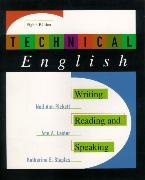Read more
I. GETTING STARED WITH TECHNICAL COMMUNICATIONS. 1. Technical Communication: What Is It? 2. Defining Workplace readers: Who Are They? II. THE TECHNICAL COMMUNICATOR'S TOOL. 3. The Technical Communicator's Tools: Clear Language. 4. The Technical Communicator's Tools: Informative Design. 5. The Technical Communicator's Tools: Visuals. 6. The Technical Communicator's Tools: Technology. III. THE TECHNICAL WRITING PROCESS. 7. The Technical Writing Process: Planning and Drafting. 8. The Technical Writing Process: Reviewing and Revising. IV. SITUATIONS AND STRATEGIES FOR TECHNICAL COMMUNICATION. 9. Procedure Explanations: Showing How. 10. Description: Using Detail. 11. Definition: Explaining What Something Is. 12. Summaries: Getting to the Heart of the Matter. 13. Reports: Shaping Information. 14. Proposals: Using Facts to Make a Case. 15. Correspondence: Sending and Responding to Messages. V. ORAL COMMUNICATION. 16. Oral Communication: Saying It Simply. THE TECHNICAL COMMUNICATOR'S GUIDE TO RESEARCH. Appendix 1: Tne Search for Employment. Appendix 2: The Search for Standard English Usage. Credits. Index.

